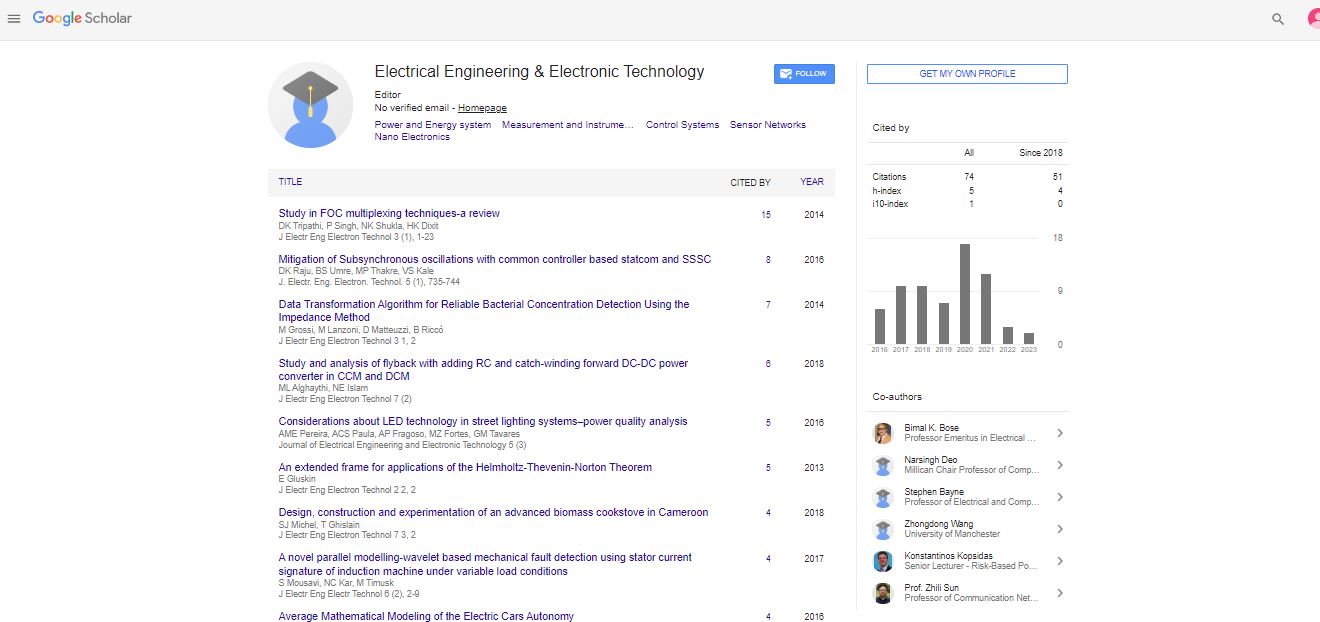Recent development in power systems for implantable bioelectronic devices
Gymama Slaughter
University of Maryland, USA
: J Electr Eng Electron Technol
Abstract
Microfabrication is an enabling technology with a broad set of applications that continues to grow. One major challenge in implementing bio-implantable bioelectronic devices such as continuous glucose monitor is to develop it so that it can power itself. We developed miniaturized integrated self-powered biosensing microsystems that are simple yet fully functional to conduct frequent, autonomous glucose sensing experiments in vitro and in vivo. In our laboratory, we are exploring the design, fabrication, and testing of flexible electrochemical power systems with integrated glucose biosensing capability. The multi-functional device will not only have the ability to generate bioelectricity from the direct conversion of the chemical energy stored in glucose, it will also utilize the energy generated by the transduction of chemical energy into electrical energy resulting from glucose as the fuel source to determine the concentration of glucose. One can envision implanting such a device into patients with diabetes thereby harnessing bioelectricity from within the body to power ultra-low power bioelectronic devices and obtaining blood glucose measurement simultaneously. This talk will highlight the importance of electrochemical power systems to medicine and how they can be employed to harness the biochemical energy from within the body.
Biography
Gymama Slaughter received her BS in Chemistry and her PhD in Computer Engineering from the Virginia Commonwealth University. She was the Director of the Center for Biosystems and Engineering at Virginia State University. She joined the Computer Science and Electrical Engineering Department at the University of Maryland Baltimore County in 2010. She is the Director of the Bioelectronics Laboratory and is a recipient of the NSF CAREER award in 2014. Her work is on the design and development of biosensor and nanoelectrode arrays for monitoring blood glucose and neurological disorders. She has published 24 peer-reviewed scientific articles on her work.
 Spanish
Spanish  Chinese
Chinese  Russian
Russian  German
German  French
French  Japanese
Japanese  Portuguese
Portuguese  Hindi
Hindi 
